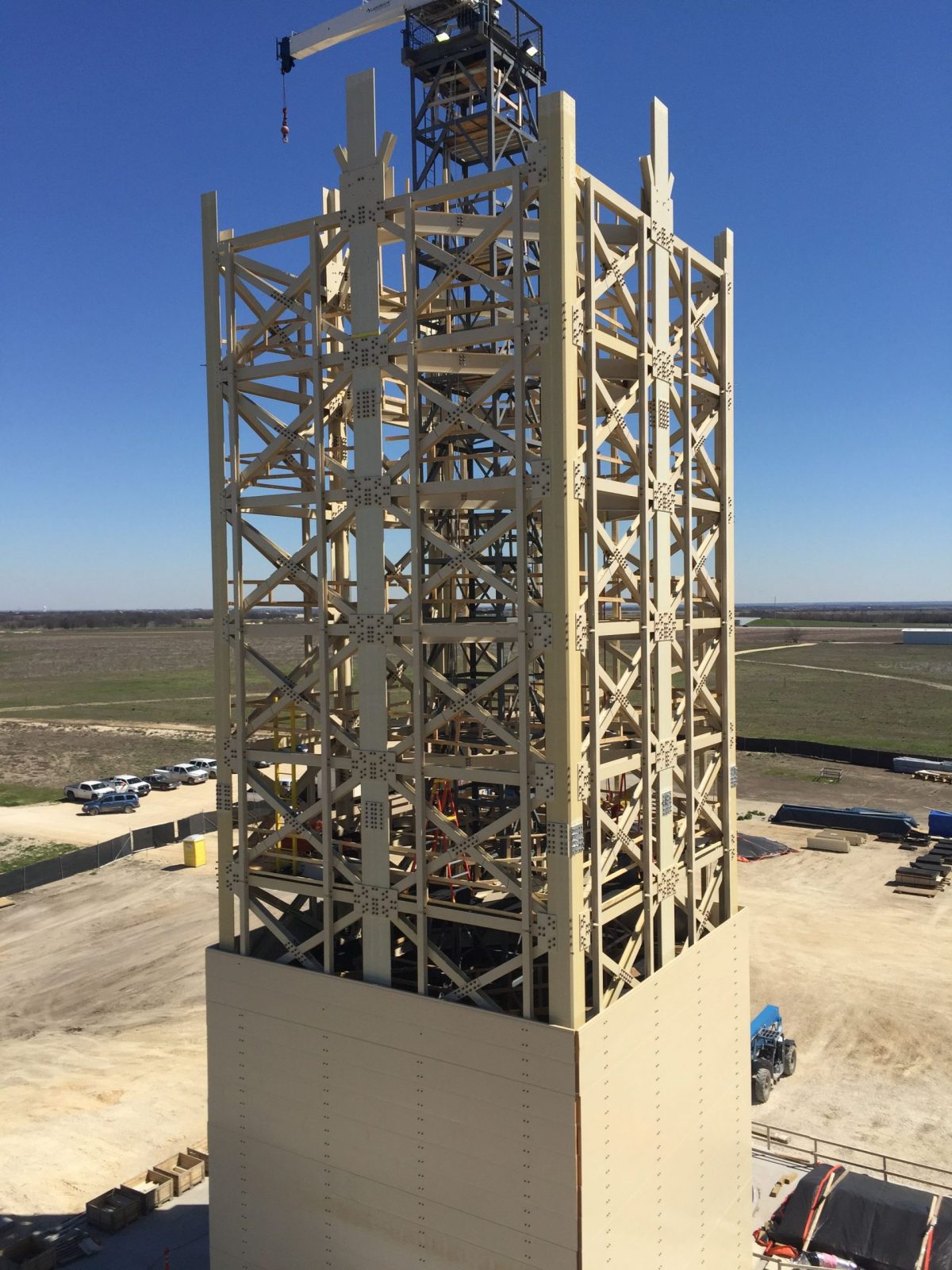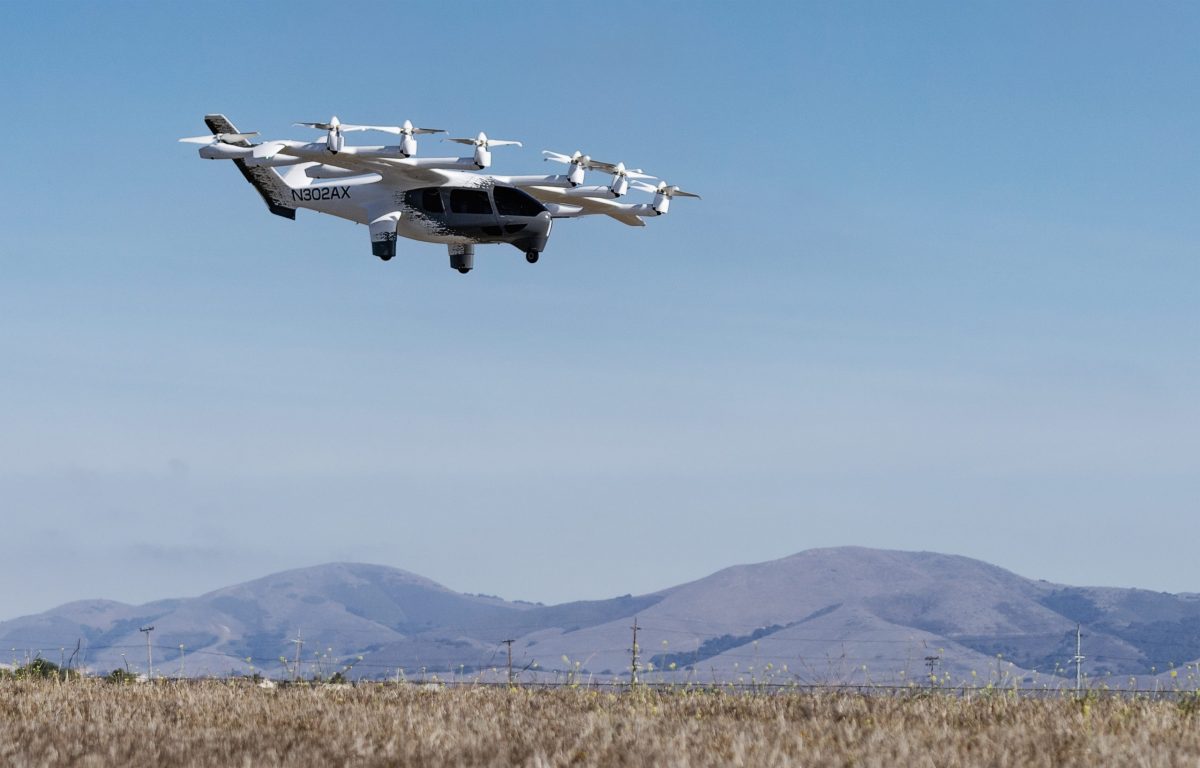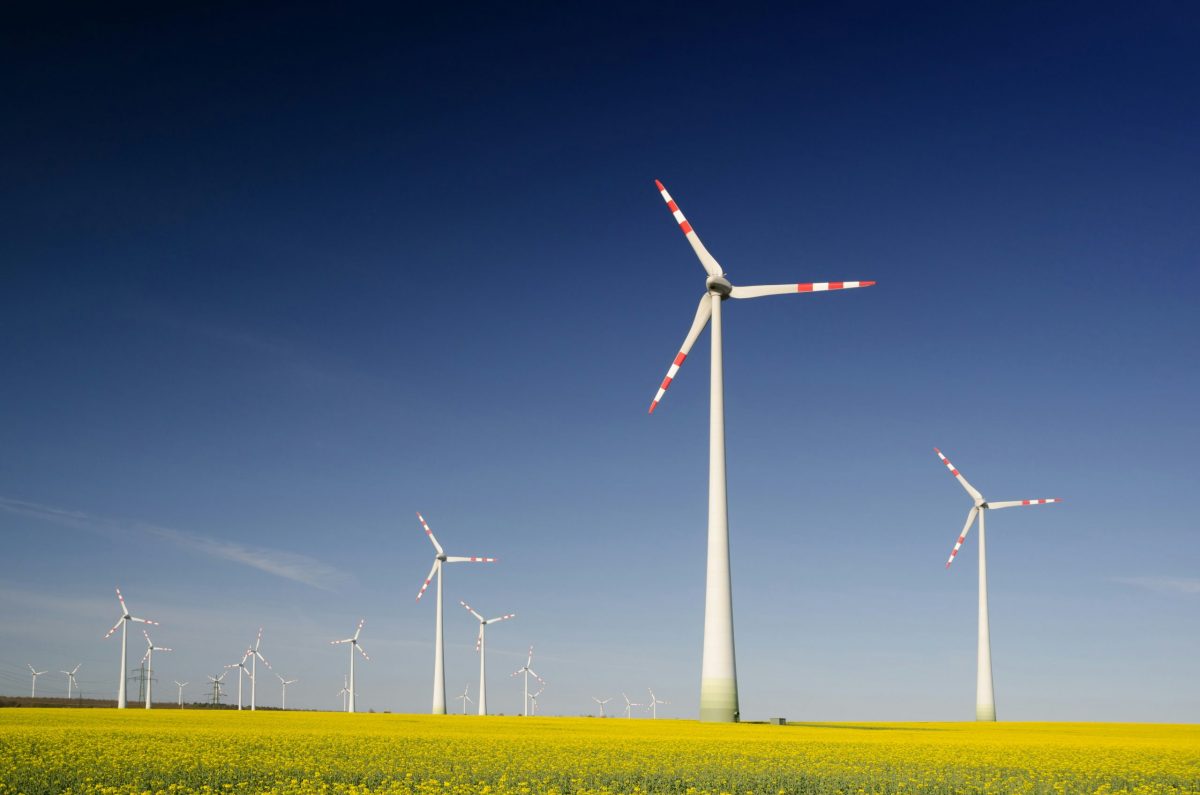
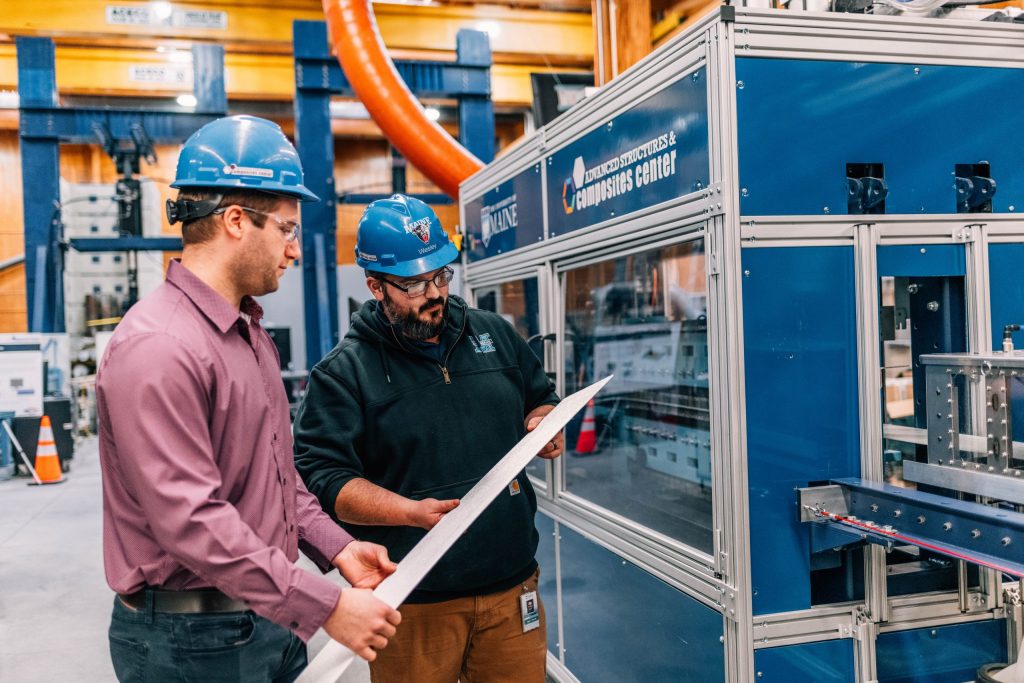
Promising Polymers
Collins Aerospace, an RTX business, has manufactured more than 40,000 nacelles for dozens of military and commercial aircraft programs. Building on that expertise, a team at the aerospace and defense supplier is working on the next generation of nacelles and other components for single-aisle aircraft featuring thermoplastic composites. Chris Croshaw, senior research engineer in thermoplastic composites, acknowledges that it’s a once-in-a-lifetime experience.
“There aren’t a lot of opportunities to make contributions to a clean-sheet, single-aisle [aircraft program]. Maybe that happens every four decades,” says Croshaw. “It’s a really cool opportunity to be able to contribute to that.”
However, Croshaw and his colleagues recognize the challenges in developing, certifying and commercializing a new material and processing system.
“We are looking for more innovation in materials, consumables, tooling and machines that will continue to enable us to bring it altogether,” says Dan Ursenbach, chief engineer of thermoplastic composites at Collins Aerospace. “We really need a paradigm shift. We need support from people in the industry and from regulatory authorities … because it’s not something one company can do by itself.”
ACMA’s Thermoplastic Composites Conference (TCC), which will be held March 26 – 28 in San Diego, provides a venue for industry professionals to share knowledge and support one another. Croshaw is one of 25 presenters at the event who will discuss high-performance thermoplastic technologies and applications. This article highlights three TCC presentations focused on manufacturing processes, material advancements and certification.
Hybridizing Thermoplastic Production Processes
While working on a project to create thermoplastic rebar, researchers at the University of Maine’s Advanced Structures and Composites Center (ASCC) developed the Continuous Forming Machine (CFM). The manufacturing platform uses a novel non-reactive thermoplastic pultrusion process to produce full-scale structural components.
“Thermoplastics present difficulties in pultrusion due to their increased processing viscosities,” says Cody Sheltra, senior research manager at the ASCC. “We developed the CFM to address those difficulties.”
The process begins with towpregs or pre-impregnated fibers and fabrics that are fed through a guidance system into an initial heating module that heats the material to the desired processing temperature of the thermoplastic polymer. Next, the material travels into the forming die, which holds its shape until the material is stably below the glass transition temperature. This sequence makes the process efficient by reducing the time the material must remain in the forming die that consolidates it into the desired cross-section profile. Finally, the formed profile is cut to length.
Researchers at the ASCC have further developed the CFM to incorporate co-processes, such as filament/tape winding and roll forming to create various profiles from a single die or create the surface of rebar. One of their latest explorations is combining large-scale additive manufacturing (LSAM) with CFM pultrusion to enable hybridized automated additive manufacturing (HAAM).
“The primary disadvantage of large-scale additive manufacturing is the volume of material required to stabilize the print or meet a performance goal. We view this bulk as an inefficient use of material, and it reduces the application of produced parts,” says Zane Dustin, research engineer at the ASCC. “We want to reduce that bulk so 3D printing of parts, rather than just applications like molds, becomes more feasible.”
ASCC researchers know firsthand the importance of creating efficiencies in additive manufacturing. They collaborated with Oak Ridge National Laboratory and the Maine State Housing Authority in 2022 to design and 3D print a prototype house on ASCC’s custom Ingersoll MasterPrint® 3X using sustainable composite materials. The manufacturing method has room for optimization considering that features such as windows were cut from fully printed walls, which leads to wasted material.
“These are opportunities to incorporate CFM pultrusion with LSAM to reduce materials and print time, extending resources,” says Sheltra.
Andrew Schanck, senior research engineer at the ASCC, adds that blending CFM and additive manufacturing also allows for reduced part weight and advanced geometries. Although construction and infrastructure are ideal markets for the HAAM technology, he envisions applications across markets that want more cost effective, rapidly deployable structures.
“Customization of the application is the name of the game,” he says. “The ability to put reinforcement where it needs to go via use of composites has revolutionized the design of structures. Moving that into the thermoplastic realm – where you can reshape structures into new forms – is huge. You can have structures that are multipurpose, multiuse and can be recycled into a different structure.”
Evaluating a Dry Prepreg Material
Nearly two years ago, Mitsubishi Chemical Group opened a production line in Germany for its KyronTEX® material platform, which combines thermoplastic staple fibers with structural reinforcement to produce a dry prepreg that is highly drapable. It can be formed in a complex die at room temperature, then molded into a part using an isothermal process such as compression molding or autoclave forming.
“Unlike a traditional thermoplastic prepreg, such as a unidirectional tape or a semipreg that are kind of boardy, this material is very flexible,” says Wade Bowles, global CFRTP technology manager for Mitsubishi Chemical Group’s Advanced Materials Division. “Let’s say your part is large and has lots of complex curves. You can follow those contours and get the material in tight radiuses.”
The company is currently collaborating with several OEMs in aerospace, automotive and sports to qualify the material and bring it to market. KyronTEX is available with a woven reinforcement or as a nonwoven material using reclaimed fiber. It can incorporate numerous thermoplastic resins, including polyetherimide (PEI), polyphenylene sulfide (PPS) and polyether ether ketone (PEEK).
“What’s unique is that it’s considered a dry fiber impregnation,” says Bowles. For the woven technology, the company produces a thin layer of fleece made completely from resin. Then, a textile woven reinforcement layer is sandwiched between two layers of the resin fleece and all of the layers are needled together in the Z direction with the same resin system.
“The dry resin and fibers are comingled, with the fibers totally surrounded by the resin system,” says Bowles. “There is no heat used in the process, so there is no saturation of the resin system into the fiber. This allows the material to be very flexible at room temperature.”
Mitsubishi’s early demonstrator work on the material platform included partnering with ATC Manufacturing to stamp form an aerospace rib structure, which was on display at CAMX 2023. The prepreg plies were consolidated into laminates, and the structural fibers were fully impregnated prior to forming.
The companies are now evaluating the demonstrator rib structure to determine if it can be produced commercially. They are using microscopy to assess impregnation levels of the pre-consolidated panels and final part and non-destructive CT scanning to gauge final part consolidation. They are also evaluating the effect of drapability on forming a large, complex structure. Bowles hopes to present some of the results at the Thermoplastic Composites Conference.
“When you’re talking about aerospace in particular, people aren’t quick to change. You really have to prove capabilities with scalability and supporting performance data,” he says.
With more than 20 years of experience in thermoplastics development, Bowles is excited at the possibilities for the material.
“There are so many advantages of thermoplastics – the ability to recycle, ease of storage, speed of manufacturing. The challenge is we have to make these materials and their manufacturing processes more cost effective to bring those things in balance,” he says. “And we have to help educate end users and manufacturers on the materials, their capabilities and their performance characteristics.”
Developing a Welding Certification Roadmap
Collins Aerospace has been stamp forming small, structural thermoplastic parts for more than two decades. With advancements in automation technology, the company would like to ramp up its use of thermoplastic materials for applications such as control surfaces and nacelles.
“We have a unique opportunity to get an improvement in properties and cycle time, potentially equating to cheaper parts,” says Ursenbach. That will require joining of more complex parts via welding.
There are numerous welding techniques being developed for thermoplastics, including resistance, induction and ultrasonic welding, each with their own advantages.
“Fundamentally, you can use any method as long as you can generate and control the heat. The other aspect is intimate contact,” says Croshaw. “You need to make sure that whatever welding technology you use, you have full parts in close contact with each other so the polymer physics can take over – so the polymer chains can start moving.”
Welding thermoplastic composite parts can save time and money compared to bonding thermoset components. Typically, thermoset secondary bonding involves preparing the surface of cured parts, then applying an external adhesive. Afterward, thermoset assemblies undergo an additional autoclave cycle to cure the adhesive and bond the two parts together.
“With thermosets, you are really doing chemistry on the factory floor when you co-cure or adhesively bond parts together,” says Croshaw. “But with thermoplastic composites, the chemistry is done. You take two separate parts and join them by welding. All you need to do is create the environment for which molecular entanglement can occur. If you create the right conditions, the weld occurs rapidly.”
Despite the benefits of welding thermoplastic composites, there’s a hurdle to implementing the developing technology – certification.
“I think welded thermoplastics is a technology we really do need for the next-generation single-aisle to meet the projected aircraft rates [of 75 to 100 per month],” says Croshaw. “In order to do that and get these welded thermoplastic parts flying they must be certifiable.”
The team at Collins Aerospace has a proposed certification roadmap, which they will present at the Thermoplastic Composites Conference. “The goal of a certification roadmap is to deliver a set of structured information that can complement existing certification approaches – documents like the Composites Material Handbook (CMH-17) – and extend their applicability to welded thermoplastic structures,” says Croshaw.
The roadmap would include recurring and non-recurring steps. Recurring steps pertain to individual welding processes and materials.
“One of the most important things for welding is defining the important process parameters,” says Croshaw. “And that goes back to creating the right conditions for a weld – the right combination of pressure, temperature and time.”
An example of a non-recurring step is industry agreement on a roadmap. Croshaw stresses that industry buy-in and collaboration is critical.
“The biggest challenge is establishing a certification approach for welded thermoplastic composite structures that will be recognized and used within the U.S. and internationally across the industry,” he says.
Susan Keen Flynn is managing editor of Composites Manufacturing magazine. Email comments to sflynn@keenconcepts.net.
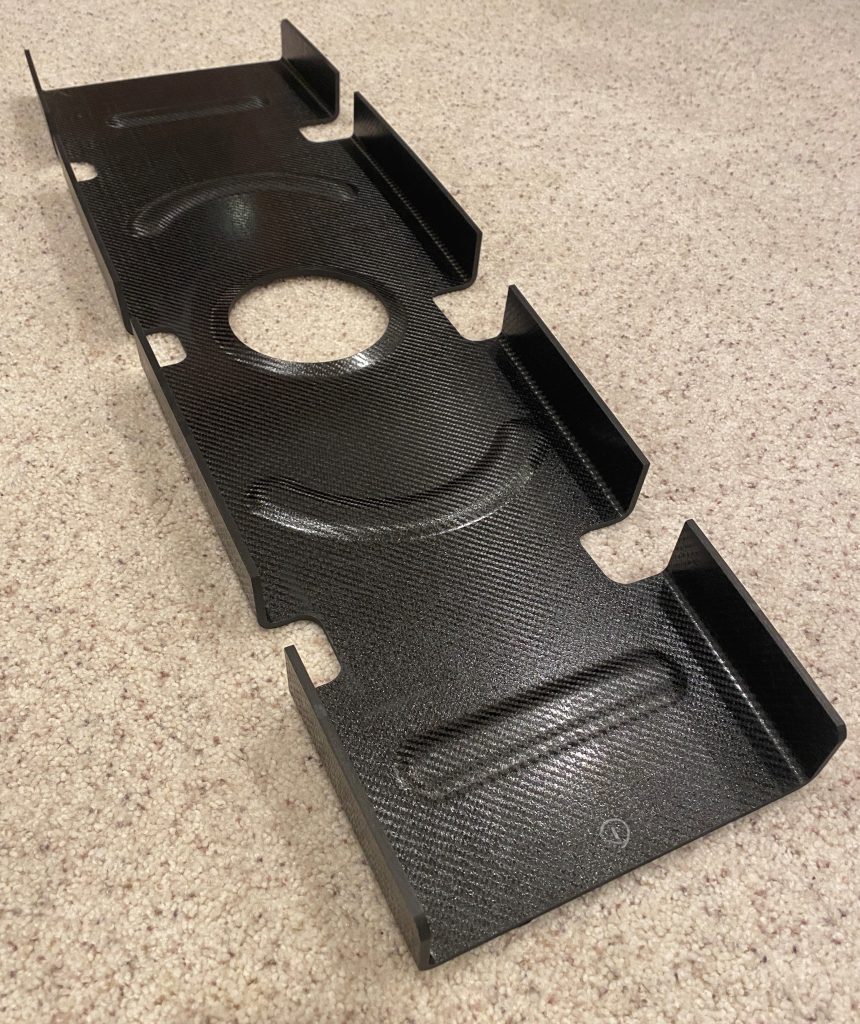
This demonstrator aerospace rib structure features KyronTEX® prepreg (shown inset) with woven carbon fiber reinforcement.
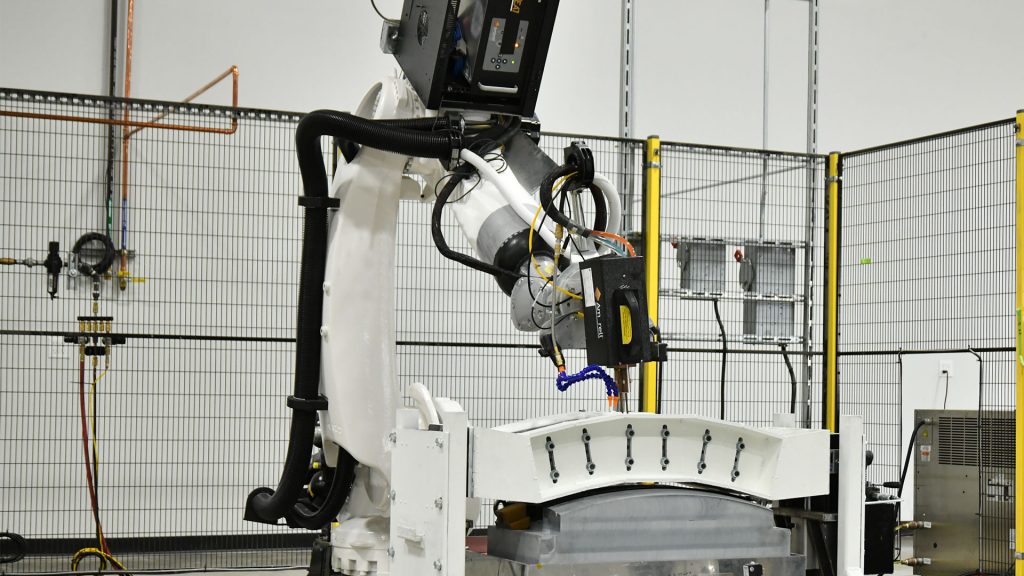
This KUKA robot with an Ambrell induction heating system is positioning the end effector into the weld tooling and welding two thermoplastic parts together.

SUBSCRIBE TO CM MAGAZINE
Composites Manufacturing Magazine is the official publication of the American Composites Manufacturers Association. Subscribe to get a free annual subscription to Composites Manufacturing Magazine and receive composites industry insights you can’t get anywhere else.





